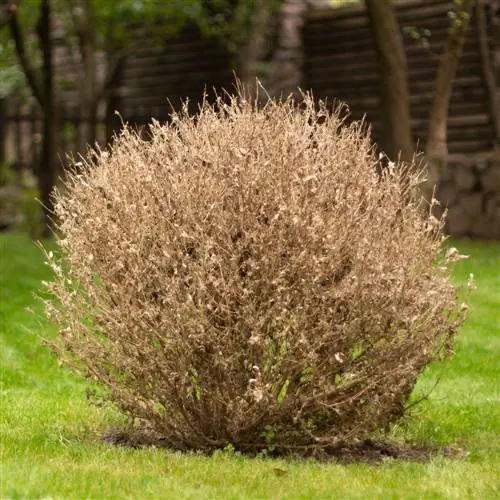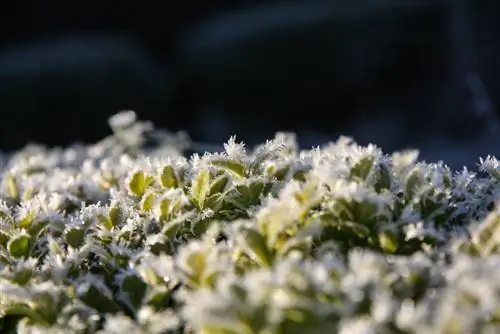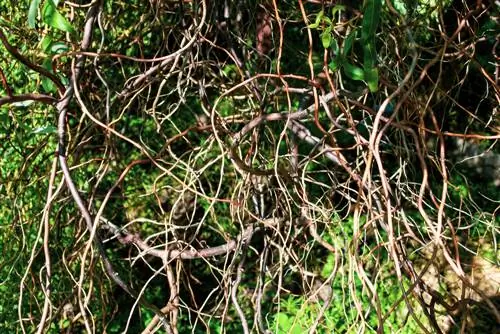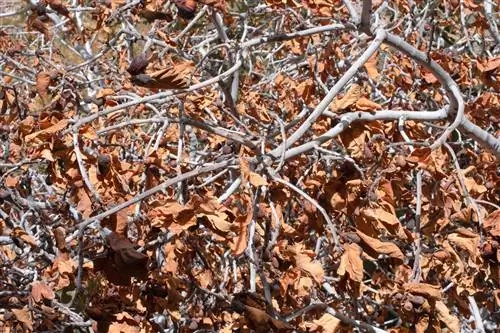- Author admin [email protected].
- Public 2023-12-16 16:46.
- Last modified 2025-01-23 11:21.
If the boxwood is he althy, it shows its shiny, green and dense foliage all year round. However, if brown spots suddenly appear or the bush appears to be drying out, the cause should be investigated as quickly as possible. In many cases it is simply a matter of care errors, but sometimes there is also a fungal disease or pest infestation behind it.
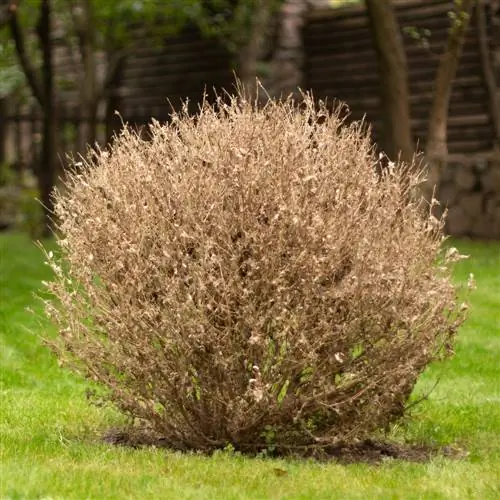
What to do if the boxwood has dried up?
A dry boxwood can be affected by care errors, fungal diseases or pest infestation. To save the plant, the affected parts should be cut back and the top layer of soil should be removed if there is fungal infection. Optimal care and location can minimize future problems.
Many possible causes for dry and brown leaves
When some people see brown leaves on their boxwood, they immediately think of difficult-to-fight fungi or stubborn pests. Fortunately, it is not always so dramatic, as simple care errors are often behind the dried shoots. Once this cause has been identified, it can be quickly remedied and the box can sprout fresh and green again, of course after the dry parts of the plant have been vigorously pruned back. Cylindrocladium buxicola or even the infamous boxwood moth, on the other hand, are not so easy to get rid of.
Care errors
The boxwood often seems dried out after a frosty winter. The reason for this is a lack of water, because the plant could not absorb enough water through its roots in the frozen ground. Frost and a very sunny location are also a bad combination: the sun increases the shrub's water needs, but due to the frost it cannot meet them. Incidentally, the frost and drought damage does not become apparent immediately, but usually only during budding in spring. Furthermore, a lack of water can also occur during dry phases in spring or summer if there is not enough watering.
Fungal diseases
The ascomycete Cylindrocladium buxicola causes the so-called boxwood shoot dieback, in which the affected bushes look brown and dried out. But other fungi also cause the shoots to die:
- Fusarium buxicola: causes boxwood wilt, v. a. for very old box trees
- Boxwood cancer: often occurs as a result of drought stress or nutrient deficiency
- Puccinia buxi (boxwood rust): rather rare, but no less dangerous than the other diseases
In all cases, the only thing that helps is an immediate, strong cut back to the he althy wood and the removal of the top layer of soil. The harmful fungi can survive here for years.
Pests
In addition to the notorious boxwood moth, other pests prefer to live on boxwoods. The damage they cause often makes infected plants appear dried out:
- Boxwood spider mite: prefers dry and warm locations, during hot summer
- Box tree gall midge: Larvae are often eaten by songbirds
When it comes to pests, it's better to be safe than sorry. Reduce the likelihood of an infestation through optimal care and an airy, not too warm location.
Tip
In addition to a lack of nutrients, over-fertilization can also have serious consequences, leading to a weakening of the plant. As a result, this is more susceptible to diseases and pest infestation.

